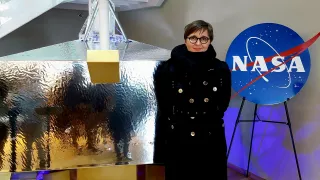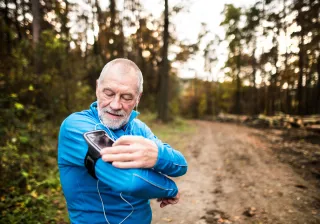Years ago, at a Sleep conference in Baltimore, I had the opportunity to listen to a presentation by Erin Flynn-Evans, head of NASA’s Fatigue Countermeasures Laboratory. It turned out that we have a common interest – estimating a person’s state of alertness from eye movements. This encounter led to a research exchange at NASA a lot later.
The cooperation between VTT and NASA is part of the EYES project funded by the Academy of Finland. In this project, we investigate the possibilities of using wearable measuring devices, new measuring technologies, and machine learning for assessing and predicting human cognitive state. Our collaborator NASA has invited me as a visiting researcher to their laboratory, for a total of six months during the next 12 months.
It is extremely interesting to see what kind of research NASA is doing around sleep deprivation and performance. This is a challenging topic for research, and VTT does not have datasets or laboratories to study it. NASA does: their laboratory enables highly controlled research setups to study the effect of sleep deprivation on physiology and performance. I will now be able to test our methods with NASA’s data.
VTT's technical expertise recognized by NASA
NASA focuses on basic research and VTT on applied research, which together builds up a good continuum for cooperation. We can provide NASA with technical know-how on the use of new sensor technology and machine learning methods in cognitive state estimation.
For VTT, the cooperation enables the study of one new human condition. Changes in the cognitive state are reflected in various biosignals, which can be measured and identified with the help of wearable sensors, different measurement technologies and machine learning methods. We have previously applied these methods to the study of acute stress and cognitive load. The methods may become refined now that we can apply them to NASA's datasets.
Outrageously high-level research, in an outrageously high-quality place
I recently came back from my first visit to NASA’s laboratory. Both the laboratory and the experts working there evoked a warm feeling: the people were the same as everywhere, and very excited about my visit. It was nice to receive a warm welcome, because I have always thought that NASA is an outrageously high-quality place for outrageously high-level research. Suddenly I found myself there as a visiting researcher.
During the visit, I had interesting conversations with the researchers and created networks that will be important during my entire future career. One of the absolute highlights of the week was a lecture on visiting space by astronaut Jessica Watkins.
Good riddance, shyness!
Shyness is one of the original sins of the Finnish people: we don't often recognize the importance of our work or dare to bring it up. Courage is rewarded – when you persistently push forward your cause, opportunities will follow. For me, this opened the doors to NASA’s laboratory and to a network of top researchers in the field.





